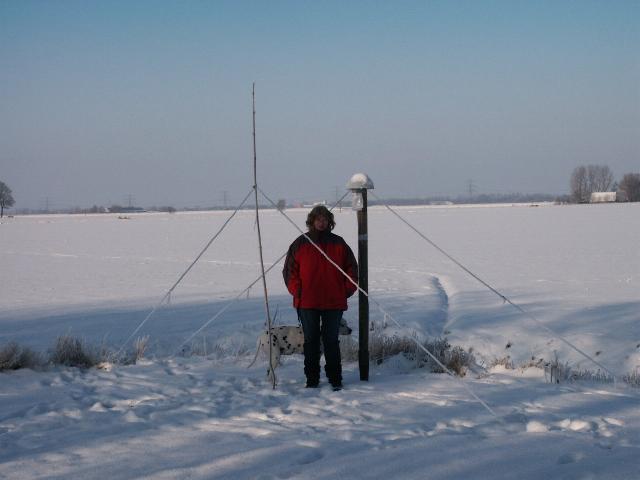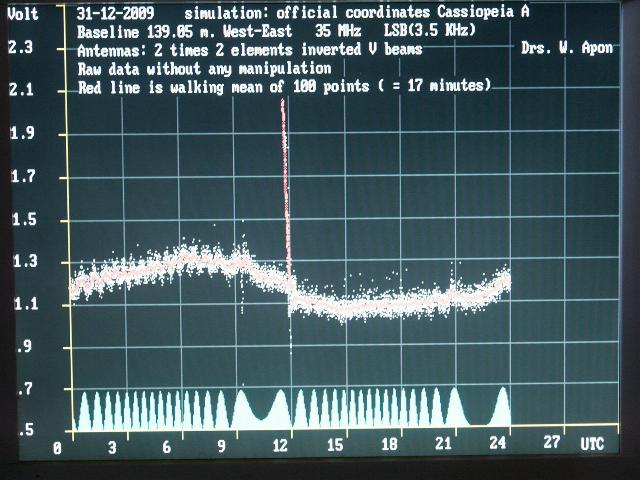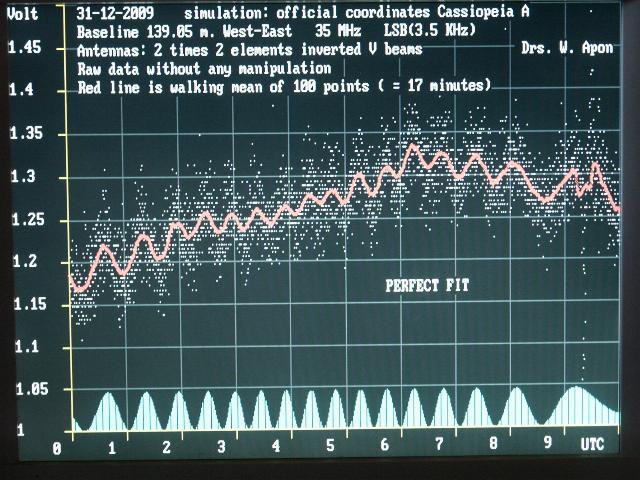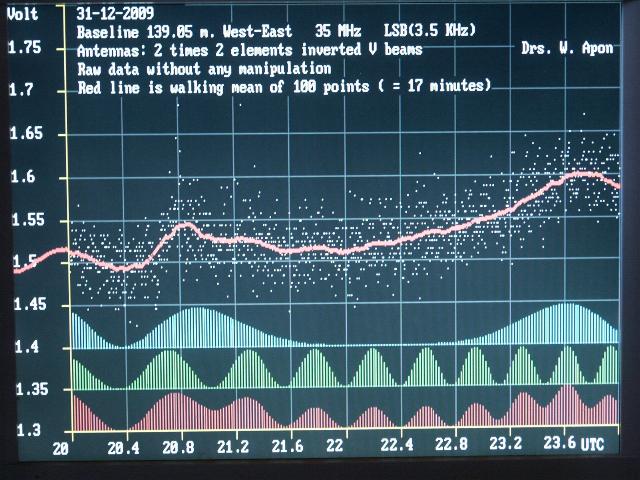Best antennas are two, 2 elements inverted V beams pointing North on a West-East baseline.
In the centre of the driven element is a 15 db amplifier with bandfilter positioned.
2 times 100 m. coax cable (RG58U) to the receiver
The coax cables are via an adjustable resistor network coupled to the receiver.
Receiver: AR3000A (AOR) tuned to 35.125 MHz, LSB with 3.5 KHz bandwidth
Receiver LF-output via 30m. wire coupled to the AD-convertor with memory.
(ATMEGA32 micropocessor with external memory, homebuild)
Exact every 10 seconds the AD-convertor takes a measurement and stores it
in a Flashmemory.
Once a day i do readout this memory with a laptop PC
In a normal PC with DOS i do the calculations in Quick Basic.

The 2 elements inverted V beam.
My girlfriend demonstrates the size of the antenna

One day measuring. (Antennas beaming North)
At 12:00 hours UTC i started this measurement with a small
experiment with my 35 MHz test-transmitter to balance
the two antenna signals. (Left part of the graph is
measured the next day.)

In more detail.
A perfect fit with my simulation of Cassiopeia A
The most right fringe shows a small disturbance
With this splended graphs you can calculate the coordinates of
the source:
The time between two bumps where they are most close together gives
the Declination of the source.
The moment where the bumps are most close together gives the Right
Ascension.
If you need this programs, please ask me for them. They are written
in DOS, Quick Basic 4.0 and i do not want any money for it.
If i measure and calculate the info from this picture, the error
with the official coordinates of CassiopeiaA is 1.35 degrees in
Rightascension and 1.0 degrees in declination.
So i found CassiopeiaA within 1.5 degrees.
That is not bad for a simple amateur radiotelescope.

When Casiopeia A gives no fringes the fringes of Cygnus A are
slightly visible.
Uppermost simulation is Casiopeia A
Middle simulation is Cygnus A
Lower simulation is the sum of Cassiopeia A and Cygnus A